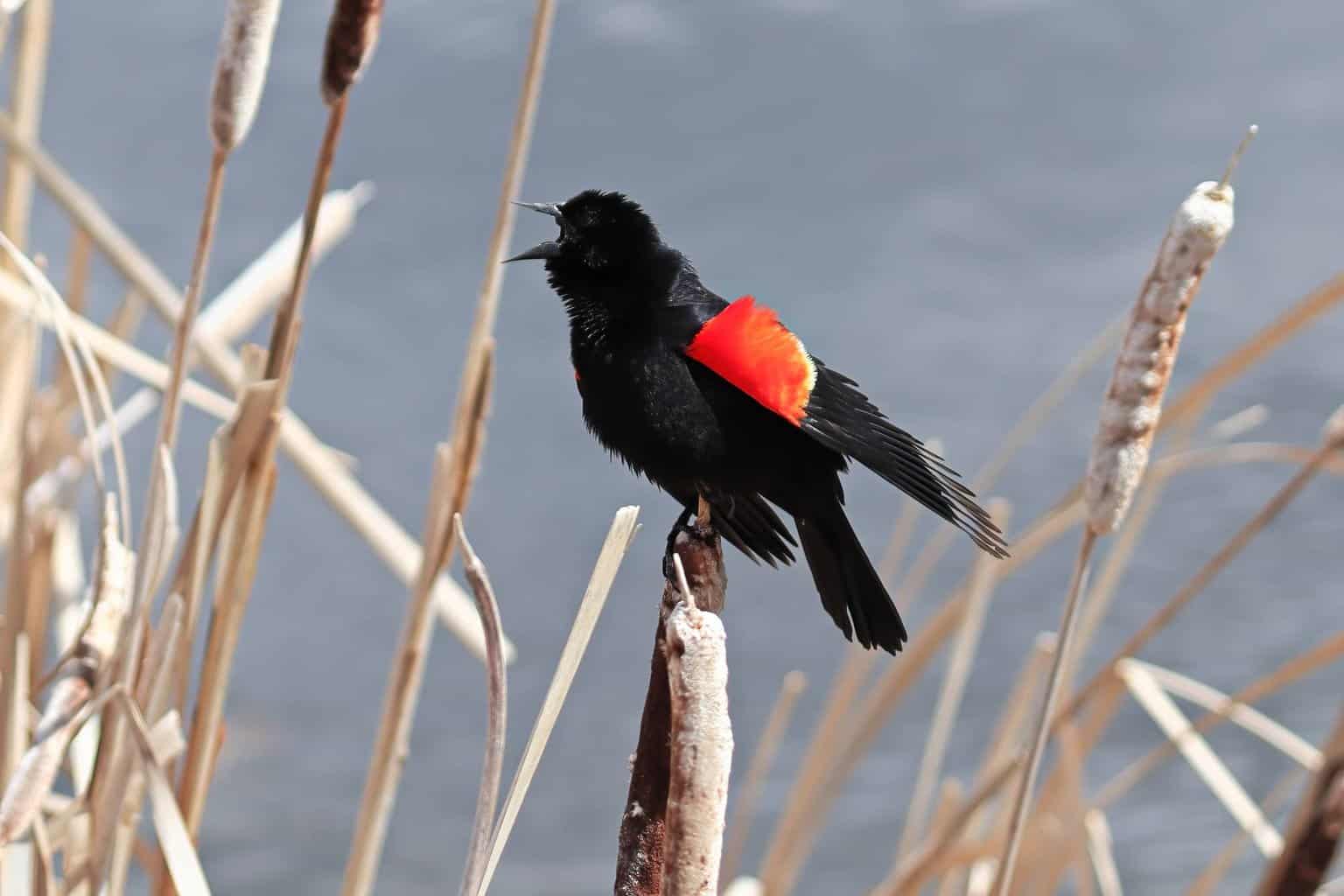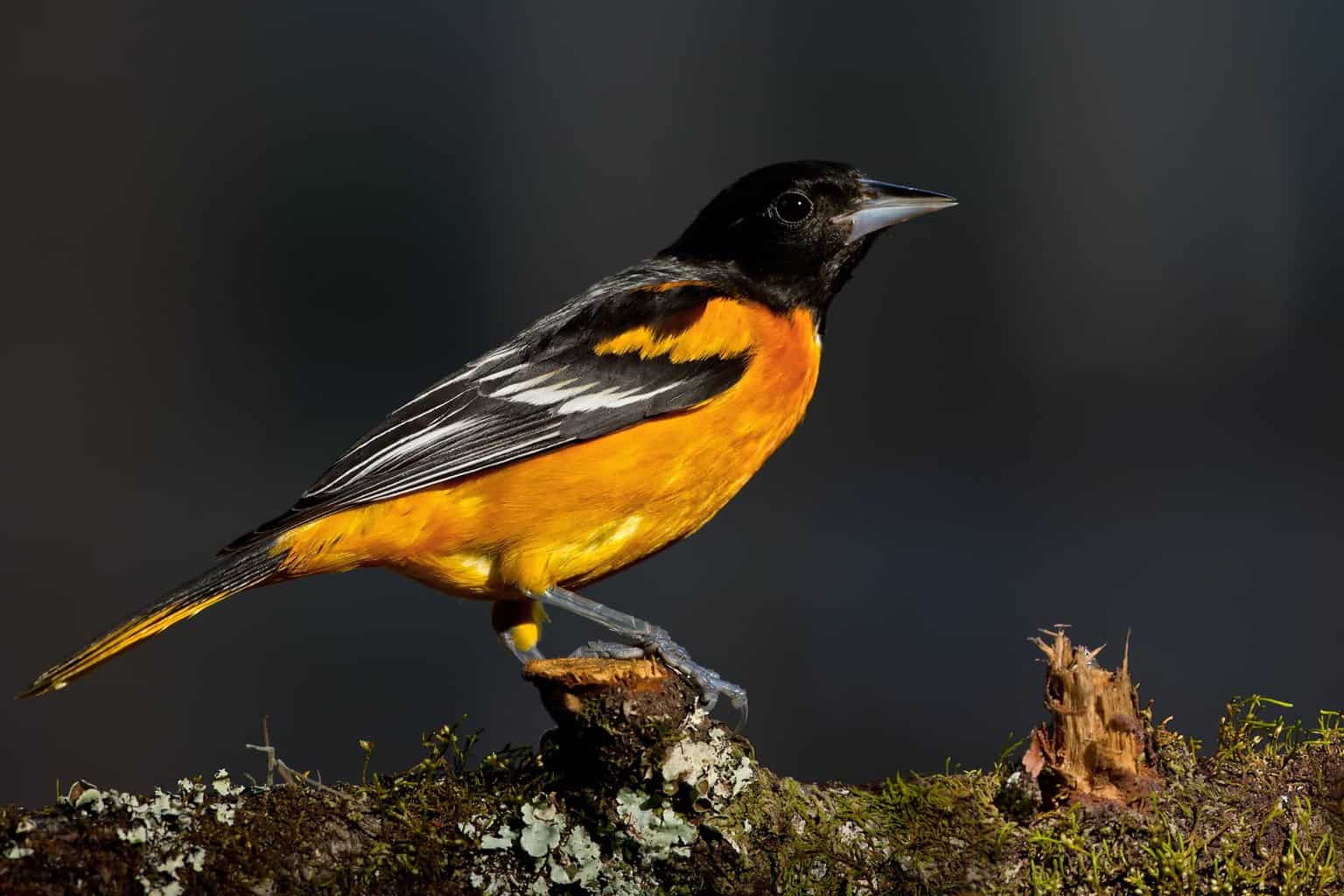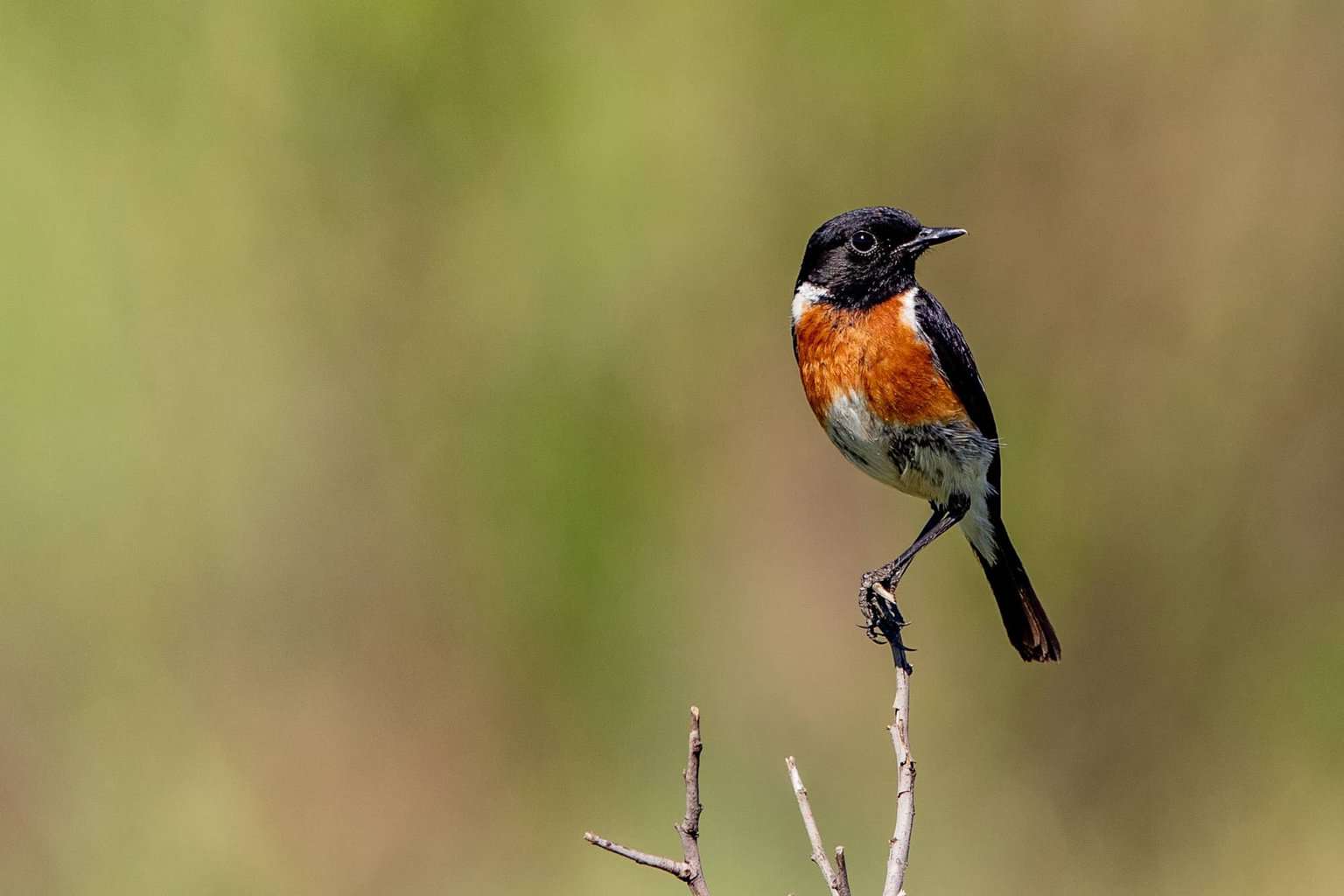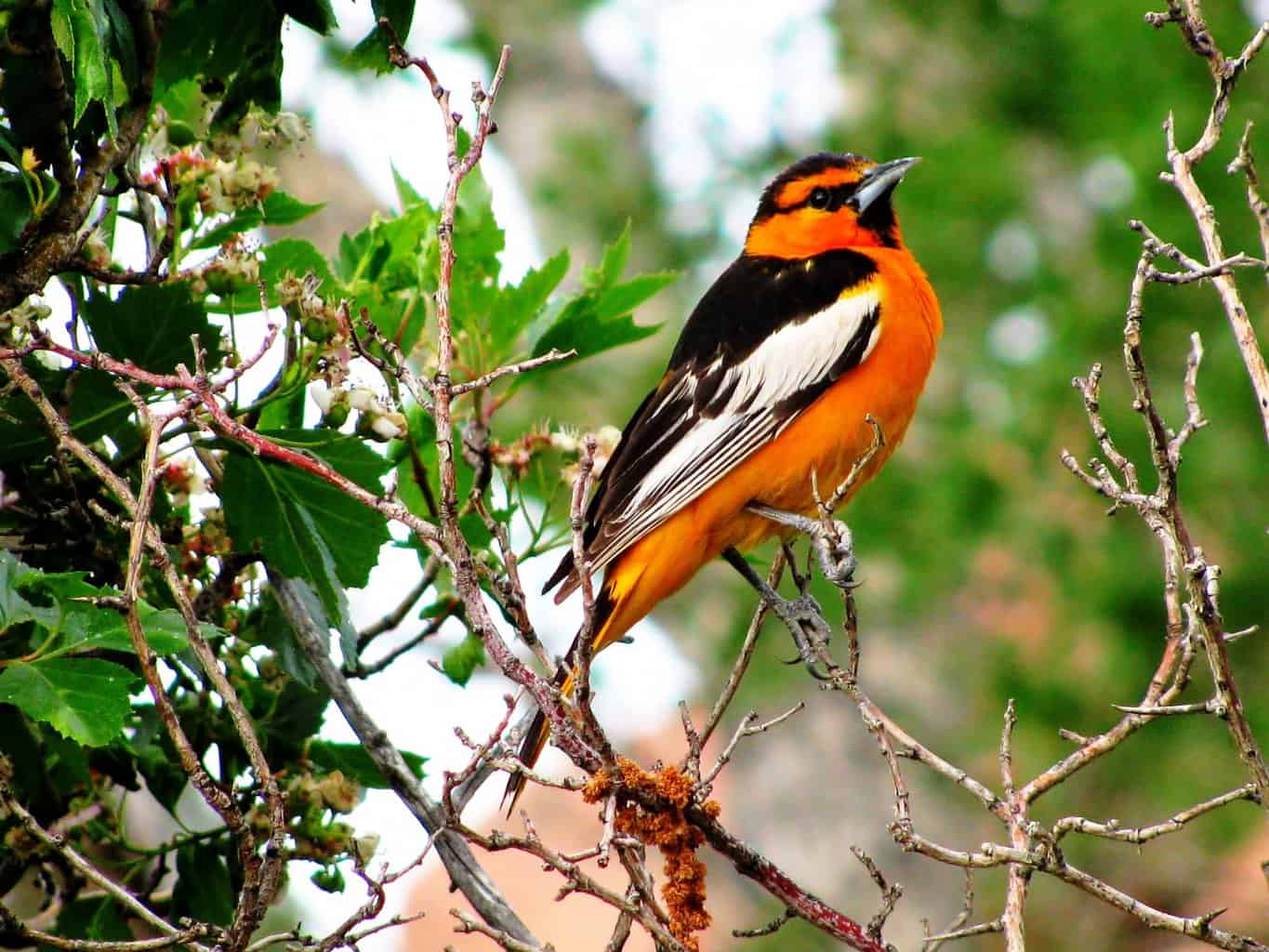You might be surprised to learn that the most common blackbird in Oklahoma is not a native blackbird at all.
But most of the blackbirds that you will see in this state are native birds, members of the Icteridae family known as new world blackbirds.
Though we commonly refer to them as blackbirds, most are not actually black in color at all.
These birds don’t always have the best reputation. But if you delve a little deeper, and take some time to understand them, you may find them absolutely fascinating.
You’ll discover which are common, and which are less so in your state, learn how to identify the most common species, and when to spot them.
Here are some blackbirds to look out for if you are birdwatching in Oklahoma.
European Starling

- Scientific Name: Sturnus vulgaris
- Length: 7.9 – 9.1 in (20 – 23 cm)
- Weight: 2.1 – 3.4 oz (60 – 96 g)
- Wingspan: 12.2 – 15.8 in (31 – 40 cm)
The European starling is an introduced species not native to the US, but it is the species on this list that you are most likely to see.
It occurs in over a third of checklists from birdwatchers in this state in summer, and almost as many winter checklists too. It is present in the state year-round.
These stocky songbirds with a musical song might not look that colorful from a distance. But a closer look reveals iridescence in blue, purples, and greens.
Amazing murmurations of these birds can be a stunning wildlife spectacle, as the birds synchronize their flights, creating amazing patterns in the sky.
Red-Winged Blackbird

- Scientific Name: Agelaius phoeniceus
- Length: 6.7 – 9.1 in (17 – 23 cm)
- Weight: 1.1 – 2.7 oz (32 – 77 g)
- Wingspan: 12.2 – 15.8 in (31 – 40 cm)
Of native species, the Red-winged blackbird is the most common in Oklahoma.
It is seen a little more frequently in summer but is also a relatively common sight in the winter months. Some birds will migrate further south, but many will remain in the state throughout the year.
The males have a black body, with black wings and red wing flashes, and the females are a streaky brown.
Brown-Headed Cowbird

- Scientific Name: Molothrus ater
- Length: 76.3 – 8.7 in (19 – 22 cm)
- Weight: 1.3 – 1.8 oz (42 – 50 g)
- Wingspan: 14.2 in (36 cm)
Brown-headed cowbirds are the third most common blackbird seen in Oklahoma in summer.
You are most likely to see them between February and August, however, some individuals do remain in the state over the winter months and don’t take part in the migration.
The male Brown-headed cowbird has a brown head and a black body. The females are smaller, with gray-brown, streaky plumage.
Common Grackle

- Scientific Name: Quiscalus quiscula
- Length: 11.0 – 13.4 in (28 – 34 cm)
- Weight: 2.6 – 5.0 oz (74 – 142 g)
- Wingspan: 14.2 – 18.1 in (36 – 46 cm)
Even though Common grackles are considered to be a near-threatened species here, they are still the fourth most commonly sighted blackbird in the state.
Most of the Common grackles in Oklahoma will migrate south for the winter, but some will remain here throughout the year.
A little taller than other blackbirds and with long tails, these are glossy black birds with a black body. The females are slightly less glossy than the males.
Eastern Meadowlark

- Scientific Name: Sturnella magna
- Length: 7.5 – 10.2 in (19 – 26 cm)
- Weight: 3.2 – 5.3 oz (90 – 150 g)
- Wingspan: 13.8 – 15.8 in (35 – 40 cm)
This is another near-threatened species, but these birds can also be found in Oklahoma throughout the year.
They are seen slightly more frequently in the summer than they are in the winter months.
A medium-sized songbird, this species is well known for its musical songs.
The birds have bright yellow bellies crossed by a black band and pale brown backs with black markings.
Great-Tailed Grackle

- Scientific Name: Quiscalus mexicanus
- Length: 15.0 – 18.1 in (38 – 46 cm)
- Weight: 3.7 – 6.7 oz (105 – 190 g)
- Wingspan: 18.9 – 22.8 in (48 – 58 cm)
The Great-tailed grackle makes a home in Oklahoma year-round. They are seen a little more frequently in summer but are seen in winter too.
The males are striking, with piercing yellow eyes, black, iridescent plumage, and long tapered tails.
The females are brown, darker above, lighter underneath, and their tails are a little more slender in form.
Baltimore Oriole

- Scientific Name: Icterus galbula
- Length: 6.7 – 7.5 in (17 – 19 cm)
- Weight: 1.1 – 1.4 oz (30 – 40 g)
- Wingspan: 9.1 – 11.8 in (23 – 30 cm)
You will find Baltimore orioles in Oklahoma during the summer months. They tend to arrive in April and depart for warmer climes in September.
The adult males are bright orange and black, with black and white wings.
The females are grayish brown and brownish-yellow. These members of the blackbird family are around the size of a robin but more slender in shape.
Western Meadowlark

- Scientific Name: Sturnella neglecta
- Length: 6.3 – 10.2 in (16 – 26 cm)
- Weight: 3.1 – 4.1 oz (89 – 115 g)
- Wingspan: 16.1 in (41 cm)
Though they can potentially be spotted year-round in Oklahoma, Western meadowlarks are not particularly common here but are seen in both summer and winter.
They have a musical song, bright yellow bellies which turn gray in winter, and distinctive black V-shaped bands across their chests.
Their upper parts are brown and white.
Orchard Oriole

- Scientific Name: Icterus spurius
- Length: 5.9 – 7.1 in (15 – 18 cm)
- Weight: 0.6 – 1.0 oz (16 – 28 g)
- Wingspan: 9.8 in (25 cm)
Orchard orioles spend the breeding season here in Oklahoma and are most commonly seen between April when they arrive from the south, and September when they migrate back to their wintering grounds.
Males are black and red underneath. The females are greenish-yellow in hue, with darker wings and white wing bars.
Brewer’s Blackbird

- Scientific Name: Euphagus cyanocephalus
- Length: 7.9 – 9.8 in (20 – 25 cm)
- Weight: 1.8 – 3.0 oz (50 – 86 g)
- Wingspan: 14.6 in (37 cm)
Brewer’s blackbirds are not all that commonly seen, but occur regularly in Oklahoma and are spotted here during the winter months, between September and mid-May.
They are medium-sized blackbirds. The males are black, with purple iridescence on their heads and green iridescence on their bodies. The females are plain brown all over.
Yellow-Headed Blackbird

- Scientific Name: Xanthocephalus xanthocephalus
- Length: 8.3 – 10.2 in (21 – 26 cm)
- Weight: 1.6 – 3.5 oz (44 – 100 g)
- Wingspan: 16.5 – 17.3 in (42 – 44 cm)
Though another bird that is said to occur regularly in Oklahoma, these blackbirds are rarely spotted here.
However, they are seen during the spring migration period, so you have the best chance of spotting them in April or May.
The males have glossy black bodies, white wing patches, and yellow heads. The females are brown and their heads are a duller yellow.
Rusty Blackbird

- Scientific Name: Euphagus carolinus
- Length: 8.3 – 9.8 in (21 – 25 cm)
- Weight: 1.7 – 2.8 oz (47 – 80 g)
- Wingspan: 14.6 in (37 cm)
This vulnerable species has seen its numbers decline shockingly in recent years. But they are still spotted here in winter.
You are most likely to see them in this state between mid-October and April.
In winter, the males have reverted from their glossy black breeding plumage and have rusty coloration. The females also have rusty feather edges and are mostly gray-brown in hue.
Bullock’s Oriole

- Scientific Name: Icterus bullockii
- Length: 6.7 – 7.5 in (17 – 19 cm)
- Weight: 1.0 – 1.5 oz (29 – 43 g)
- Wingspan: 12.2 in (31 cm)
Though not at all a common sight in Oklahoma, those living in the west of the state may well spot these birds during the breeding season, between April and September.
The females have gray backs and yellow coloration elsewhere. The males are bright orange, with black and white wings and black head markings.
Bobolink

- Scientific Name: Dolichonyx oryzivorus
- Length: 5.9 – 8.3 in (15 – 21 cm)
- Weight: 1.0 – 2.0 oz (29 – 56 g)
- Wingspan: 10.6 in (27 cm)
If you are lucky, you may spot Bobolinks in Oklahoma during the spring and fall migration periods. So look out for them in the state in late April/ May and from October into early November.
Breeding males are easily identifiable, with white backs, black bellies, and shocks of yellow on their heads that look like hair.
Females and non-breeding males are brown-streaked, with dark around their eyes and dark stripes on their crowns.
Final Thoughts
Other sightings of different blackbirds are occasionally made.
Vagrant or accidental species which have been spotted here include the Bronzed cowbird, Scott’s oriole, and Shiny cowbird, though the birds on the list above are the main ones to look out for in this state.

